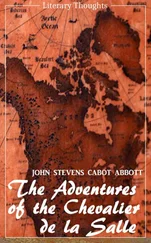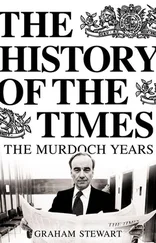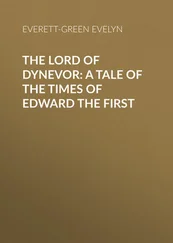At roughly 3500 square miles, home to about 500,000 people in 1950, Cyprus was comparable to the U.S. state of Delaware, though Cyprus was poor, not yet a tax haven. About half the size of Wales, Cyprus at mid-century had just one-fifth its population. A standard formulation tallied the people as 80% of Greek descent, 20% of Turkish descent, ignoring smaller minorities of Armenian and Lebanese ancestry. Unlike Michael and his family, most Cypriots found it difficult to move beyond their village or district, nigh impossible to leave the island, except as fishers or sailors. Thus, for many, it felt claustrophobic. The cultural norms were stifling, religious values overpowering—not unlike the Greek islands of Crete and Hydra, where Michael would set and shoot two films. Though foreigners frequently came and went, evidencing the cosmopolitanism of ports like Limassol and Kyrenia, they told tales of worlds inaccessible to ordinary Cypriots. 6
Before World War II, a steamship from Larnaca to London required five days journey, including rail passages, at an obscene price quoted in pounds. If poor and working-class Cypriots—the vast majority—could not be transported to these far-flung places, they nonetheless could communicate with them nonstop. Letters and telephones, newspapers and books, movies and magazines, then radio and television all provided a sense of connection, especially to Turkey, Greece, and Britain. By the turn of the millennium, with roughly a million people, low-cost air travel enabled the tourism industry to overtake agriculture. 7
The myth of distinct continents is easily put asunder when we consider that Cypriot’s northern neighbor Turkey straddles Asia and Europe and its southern neighbor Egypt overlaps Asia and Africa. More significant still are the individuals and groups who repeatedly cross over these territorial and metaphorical divides. The big construct known as the West, for example, takes in many elite and middle-class persons of the global South or East: The Orient. After all, who brokers these military deals? Who parcels out the properties? Who buys and sells provisions? Who draws up the contracts? Who translates from the local idioms into the colonizers’ language? The Queen’s English? Who sends their offspring to the metropole or, failing that, its finer imperial outposts for a “proper” education? In the prevailing tongue and accent, customs and manners? 8
One such family in Limassol was called Cacoyannis. Among an island society given to fine distinctions, Angeliki Efthyvoulos came from a higher status family than her fiancé Panayiotis Cacoyannis, whose forebears were traders, selling horse feed and other supplies to imperial troops and locals. Still, Angeliki’s husband-to-be was ambitious. While she learned music at the piano, he took a correspondence course in the 1910s from Chicago’s La Salle Extension University, an early large-scale provider of distance education. Though U.S. regulators questioned La Salle’s designation as a university, no one doubted the determination of P. Cacoyannis, as his upstart law office styled him. With his La Salle Bachelor of Laws degree, he had begun his professional ascent. 9
At the outbreak of World War I, the British Empire took Cyprus—already its protectorate—from the Ottoman Turkish Empire. Since Greece would join Britain and its allies in combat against German, Turkish, and other enemies, a wartime marriage between two Greek Cypriots violated no national or racial taboos. Nor was Cacoyannis too old for Angeliki, at just over five years her senior. So the wedding went ahead. A sixteen-year-old bride on 8 November 1915, Angeliki was well above the marrying age for girls in turn-of-the-century United States, for example. Before 1920, the vast majority of state age-of-consent laws permitted adult male sexual intercourse with female children, such that a daughter could be transferred by marriage from a father’s to a husband’s household at the tender age of ten—seven in Delaware. After her wedding in late 1915, Angeliki bore her first child, a son, just after New Year’s 1917. But Louis lived only three months. Overcoming their sorrow, the newlyweds tried again, and Angeliki gave birth to daughter Ellie in December 1918, as the Great War ended. Again, given the correlation between teen pregnancy and infant mortality, Ellie died just after her first birthday. 10
In the 1920s, their odds improved, and the family flourished. Stella was born healthy in 1920, followed in rapid succession by Michael in 1921, Yannoulla in 1923, and finally George in 1924. So the family portrait commissioned in 1928 celebrated much more than a secular Eastertide, Angeliki’s birthday, or Mother’s Day for Angeliki and elder matriarch Zoe—whose four daughters on the back row represented scarcely a third of her offspring, with many others joining the diaspora in southern Africa. Most of all, the photographic portrait of ten subjects solidified as it commemorated this large extended family’s latest nuclear family in Limassol. 11
With their plunging necklines and short hair, if not short skirts, Angeliki’s sisters seemed liberated flappers—uncoupled and unencumbered. By contrast, Angeliki was pinned with the sexist nuclear-family labels of housewife, homemaker, and hostess. Nonetheless she took considerable comfort in the notion that her husband and her children were destined for greatness. As the four siblings grew up, they grew close—and competitive. According to Michael, his “father was not very involved in the family,” leaving the bulk of parental duties to Angeliki. To be sure, he earned money for their food, clothing, shelter, and education, as well as nights out for himself, sometimes accompanied by their mother. In that last sense, earnings “were wasted, everything was spent” on parties and revelry. For many years, the Cacoyannis family did not own their own home, but rented “the upper floor of a duplex house.” 12
Across a longstanding cosmopolitan mix of religions, languages, races, and ethnicties in Cyprus, gender and sexuality were ordered along binaries consistent with globalizing trends. Oppressive gender norms sent middle-class men into the public sphere of employment, leisure, and political participation, with P. Cacoyannis serving on the British colonial Executive Council, relegating women to dutiful daughters then wives, working mostly inside the home. They took on the responsibilities of childbearing, childrearing, cooking, cleaning, purchasing and mending clothes, managing education and extracurriculars. Men enjoyed great sexual license in both premarital and extramarital contexts, while women suffered under dominant representations as virgin or whore: chaste bride then honorable mother, or fallen woman. This heteronormative sexual double standard for women—permitting men to forever sow wild oats while chaining women to one lifelong monogamous marriage—was of course unsustainable. Exogamous marriage, outside one’s own cultural group however defined, also generated anxiety, ostracism, and hardship. Further queering these norms, LGBTI people faced enormous obstacles and persecution, from birth to—often early—death. The Cacoyannis family crystalized these values, even as Michael tested them again and again. 13
Reading with Garbo, Gender-bending with Dietrich
In the late 1920s in Cyprus, sacred and secular realms grew in tandem and often in opposition, depending upon a constellation of factors such as language and ethnicity. Sunni Muslims tended to speak Turkish, Orthodox Christians Greek, Protestants English. Lebanese and Armenian also were spoken. Enterprising Armenians such as the portrait photographer attended their own Eastern Orthodox Church, whereas most Lebanese were Maronite Catholics. What was a non-believing family to do? Many chose to tolerate the pious, play it by ear, and go through the motions. For this particular family, that meant speaking both Greek and English, identifying as Κακογιάννης and Cacoyannis, as well as attending Easter and Christmas services at the Church of Cyprus. First grade classes for Stella, as she reached the age of six, commenced at Terra Santa School, which—as its name suggested—considered Cyprus a part of the contested Middle East “holy” land. This Maronite Catholic girls school was situated on St. Andrew Street, named for the apostle, brother of Peter. As in Catholic dogma Peter’s successor is the pope in Rome, so too in Orthodoxy Andrew’s successor is the patriarch in Constantinople, aka Istanbul. Perhaps more important to Stella, her school was conveniently located just one block from their rented home on Otto and Amalia Street, named for the mid-nineteenth century king and queen of Greece. This was the multifaith, multiethnic, multilingual mix into which motion pictures intervened in early twentieth century Cyprus. 14
Читать дальше











